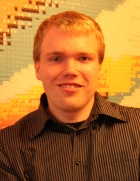Peter Ludwig

Peter Ludwig
Physik Department E12
Technische Universität München
James-Franck-Straße 1
D-85748 Garching
Germany
Office: Beschleunigerlabor, 104
Tel: +49 (0)89 289 14273
Fax: +49 (0)89 289 12297
Email: Peter Ludwig
Research
Accelerator Mass Spectrometry (AMS):
Accelerator Mass Spectrometry is very powerful tool for rare isotope detection. The Maier-Leibnitz Laboratory (MLL) in Garching is uniquely equipped to measure extremely low isotopic ratios on the order of 10-16, depending on the isotope. This provides us with a very sensitive tool with applications in various fields, including astrophysics. The following is one among the projects I am currently working on:
Search for Superheavy Elements (SHE) in Nature:
It is not excluded, that small amounts of SHE (Z>104) are present on earth. If they have been created in sufficient amounts in the rapid neutron capture process before the formation of our solar system, and their half-lives are sufficiently long, they might still exist in nature.
Within the framework of my diploma thesis, an AMS beamline at the MLL was upgraded with a new Wien-velocity filter. This setup is specifically designed for AMS with heavy isotopes. It is also possible to search for extremely small traces of SHE in natural samples. Experiments have been conducted (and are sill ongoing) and upper limits on the abundances of SHE in several sample materials could be established. For more information, visit: http://www.bl.physik.uni-muenchen.de/gams/PUBL/2010_Ludwig_Diplomathesis.pdf
Search for Supernovae in Microfossils
For my PhD thesis, I am working on a project that aims to discover a past interaction of a supernova event with the fossil record of our planet in the form of traces of the long-lived radioisotope 60Fe. When the ejecta of a supernova deposit 60Fe on earth, it can be incorporated by magnetotactic bacteria into magnetosomes. It is possible to search for smallest concentrations of 60Fe in the fossils left behind by those bacteria with accelerator mass sepectrometry at the Maier-Leibnitz-Laboratory in Garching. For further information please see this page.